Step to make a fun and easy noodle play sensory activity for toddlers. Gather your supplies, fill with dry pasta, add extra toys and encourage play!
Sensory activities are a fun way to encourage your toddler to explore and learn about their senses. Dry pasta is a great for sensory play because it’s likely something your toddler has not explored before, it’s cheap, and you may even already have some on hand.
Here are four steps to create an awesome noodle play sensory activity for your toddler plus some tips and tricks for this activity.
Step 1 – Gather Supplies
Noodle sensory play is an awesome and simple sensory play activity because it can be done using supplies you already have! Almost anything goes when setting up your noodle play activity. Try to use household items that are unbreakable and that you wouldn’t mind your toddler playing with and getting dirty.
Gather up some household supplies such as:
- pots and pans
- mixing bowls
- dinner bowls
- plastic tub
- shoeboxes
- storage bins
- soup spoons
- mixing spoons
- measuring cups
- measuring spoons
- tongs
Here are some of our specific product recommendations based on what we use:
Silicone Baking Pan Set – This is the set that we use. It’s a great option for noodle play because silicone pans won’t break, they are flexible so you can easily pour from them, and they are dishwasher safe for easy clean up.

Silicone Tongs – I couldn’t find the exact tongs that we have, but something like this that has a flat edge would be perfect for this activity. The silicone will also help the noodles not slip out when grabbed.
Stainless Steel Measuring Cups – perfect for scooping and because they are stainless steel they are also fun to rattle with noodles inside and test out what sounds that makes.
Step 2 – Fill with Dry Pasta
Once you have your supplies gathered, fill up some of the bowls, pots, or containers with dry pasta. I like to fill a few containers but also use some empty to encourage scooping and transferring noodles to the empty containers.
Why Pasta?
Pasta is especially good for a sensory play activity because its cheap, durable, easy to clean up, and harmless to eat (if your toddler is under two or prone to putting things in their mouth always supervise and beware of chocking hazards).
If this is the first time doing a sensory play activity with pasta, your toddler has very likely not held dry pasta before. Its a different sensation than cooked pasta and can be fun to discuss the cooking process and why dry pasta is different.
Dry pasta is also great for stimulating many different senses. Your toddler can:
- feel the dry pasta in their hands and between their fingers
- listen to the sound it makes when they stir it, shake it in a metal cup, or transfer it to an empty bowl
- see and observe the color and the different shapes, bends, ridges and grooves
What Kind of Pasta to Use?
Almost any variety of pasta can be used for this noodles sensory play activity. I recommend a medium size pasta so that its easy to scoop and play with, but also easy for cleaning up.
If you choose too large of a pasta it might be hard for your toddler to scoop with a spoon, but if you choose too small of a pasta it would be hard to pickup with tongs. Long noodles like spaghetti or linguini are also not recommended for this activity since they are hard to transfer with utensils and are prone to breaking into smaller pieces.
Recommended noodles: elbow macaroni, rotini, or farfalle bowtie pasta.
Would also be okay: small or medium shells, ziti, rigatoni, wagon wheel noodles.
Try Different Colors. You can also use different colored pasta for an additional sensory experience. Try pasta that is colored red or green with veggies or multi-colored pasta.
Step 3 – Add Extra Toys
Once you have your containers set up and filled with pasta and your scoops and utensils ready, you are ready to go! However, a fun extra step is to add in some small toys to the noodle bowls so that your toddler can dig for them and discover a hidden treasure.
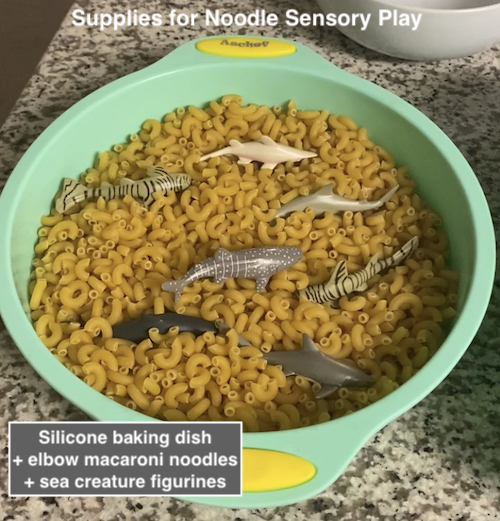
Here are some toy ideas that would be perfect for this activity:
- Small Sea Creature Figurines: this is similar to the set that we have and use for this activity. These are a great size to hide in your noodle bowls and be still be covered by noodles, but are also a little larger and great for young toddlers.
- Small Caterpillar CAT Mini Machine Construction Trucks: these small construction vehicles are the perfect size to push around and dig through the noodles. Great for imaginative play and fine motor skills.
- Big Toy Gems (recommended for age 3+): cute heart-shaped gems that come in a variety of colors. These would be perfect to hid in your noodle bowls and use as treasure.
Step 4 – Encourage Play
Finally, set out all the supplies, bowls of noodles and toys and let your toddlers play! Always supervise your toddler while doing this activity.
If your toddler is a little hesitant, demonstrate that the noodles are safe and show them how they can dig through with their hands, use scoops and utensils or digger toys if you have them.
Where To Do Noodle Sensory Play?
It’s recommended to do this activity outside or in a room that can be easily swept or vacuumed since noodles will likely get dropped on the floor. Set a large towel or blanket under your noodle play area to collect dropped noodles and have an easy clean-up.
I like to set this on our coffee table so that my toddlers can walk around and play with the different bowls that are set up. You can also do this activity on the floor or at the kitchen table.
Make Clean Up Fun
Clean up is inevitable, but here are some ways you can make cleaning up this activity fun:
- have your toddler count (or count for them) as they pick up the noodles off the floor.
- set a timer and see how quickly they can pick up all the noodles.
- let them use tongs to pick up each noodle or use the digger toys to push them into one pile.
- get out the vacuum and let your toddler use the wand attachment to help clean up.
- let your toddler use the broom or hold the dustpan while you sweep up the dropped noodles.
Thanks for stopping by! You might also like these related posts:
- Top 60 Amazon Baby Registry Must-Haves for New Parents
- Easy Summer Lunch Ideas for Kids: 3 Fun & Time-Saving Meals Moms Will Love
- Kid-Friendly Blender Cottage Cheese Pancakes (Hulk Pancakes!)
- 3 Must-Have Items for Potty Training Your Toddler
- 9 Easy Toddler Sensory Activities
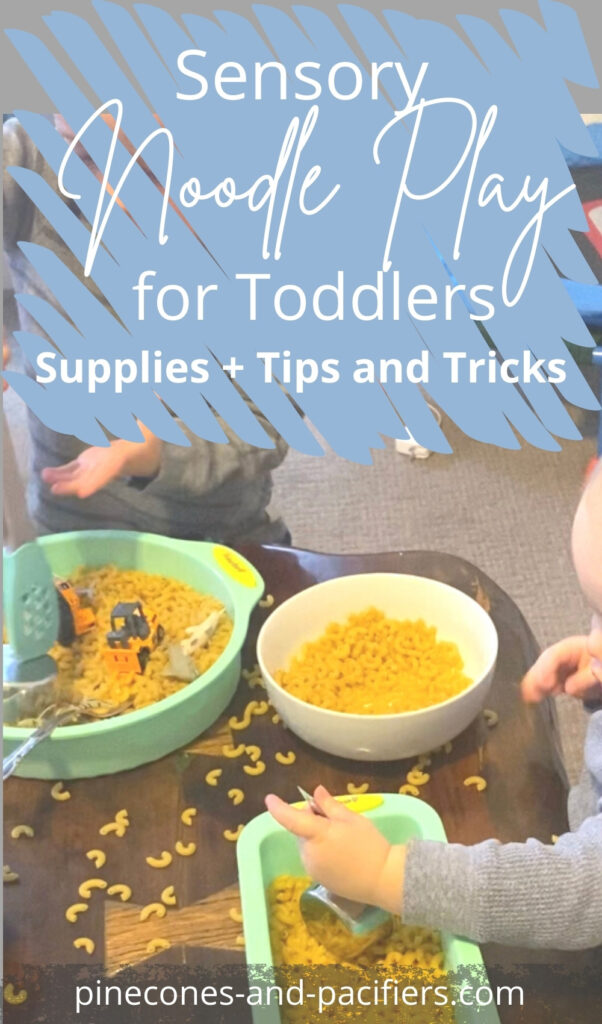
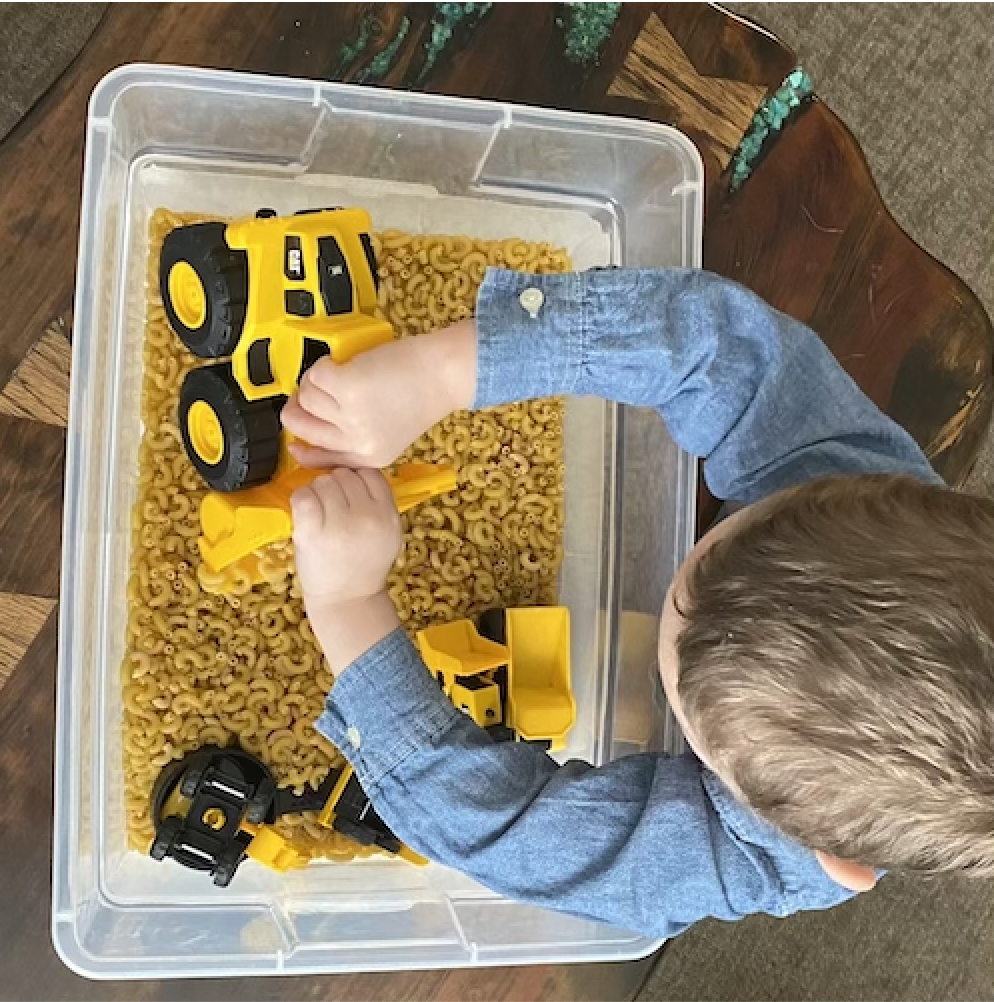
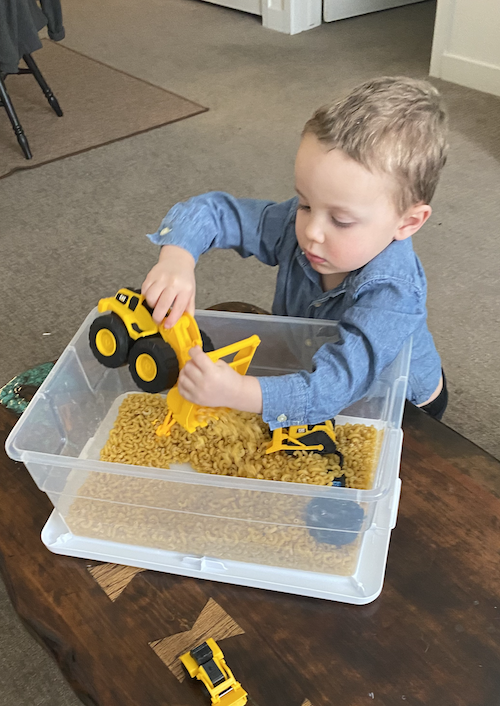

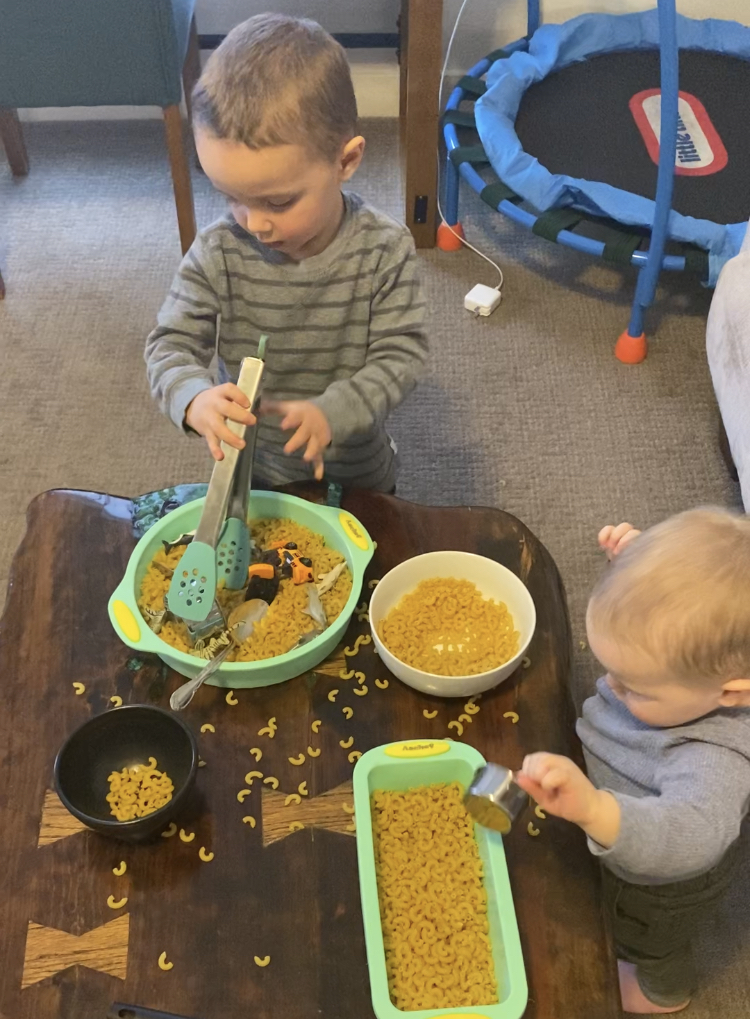
Great post!